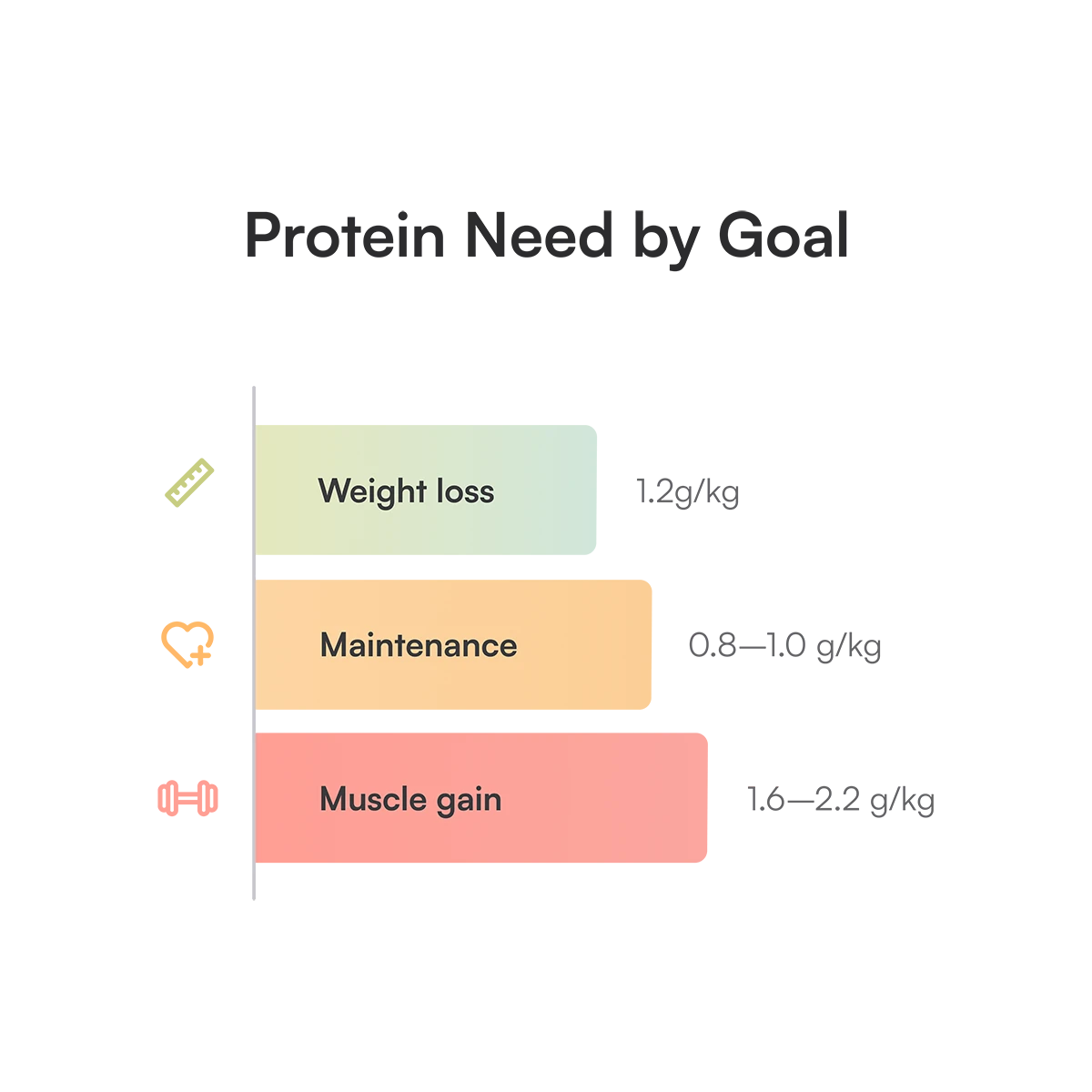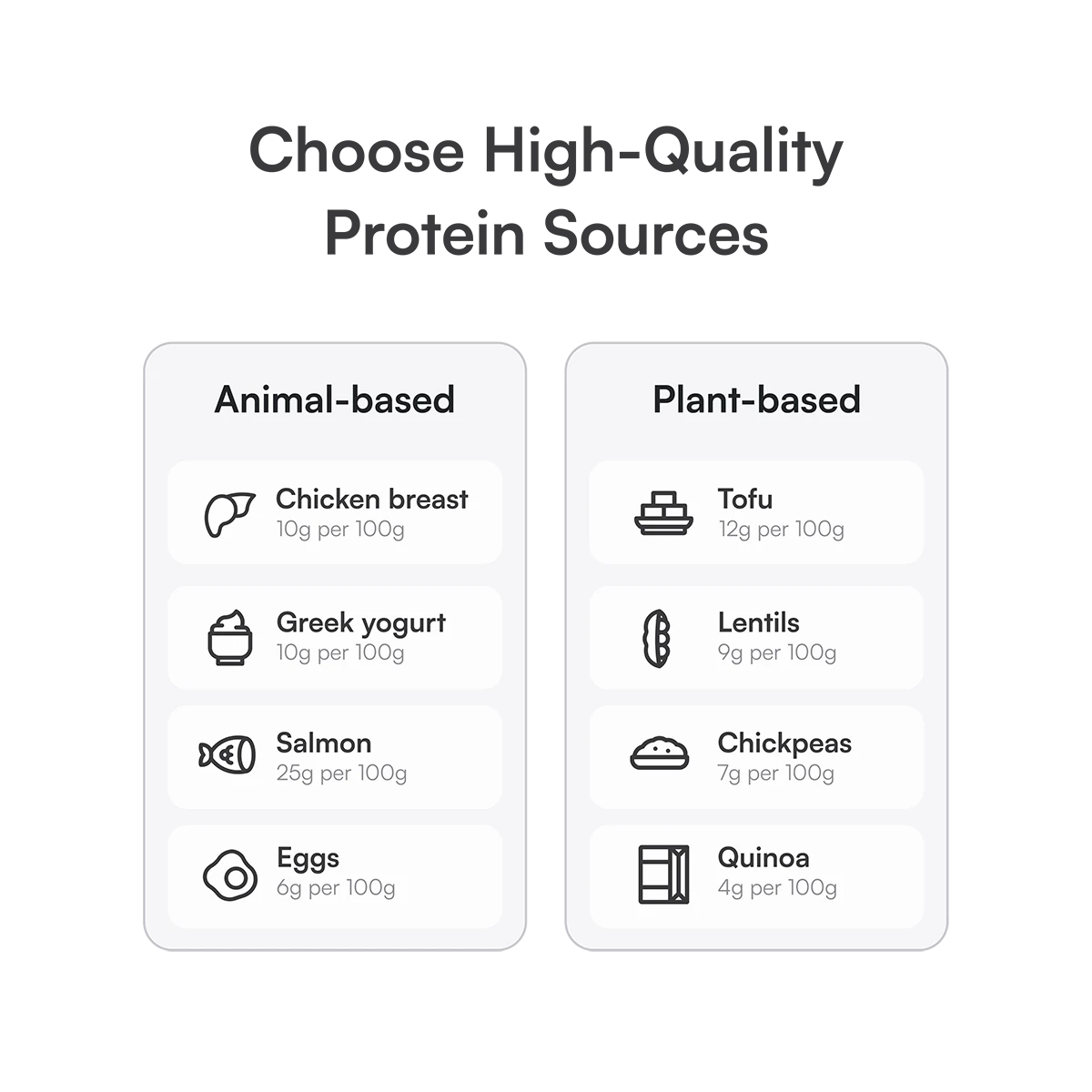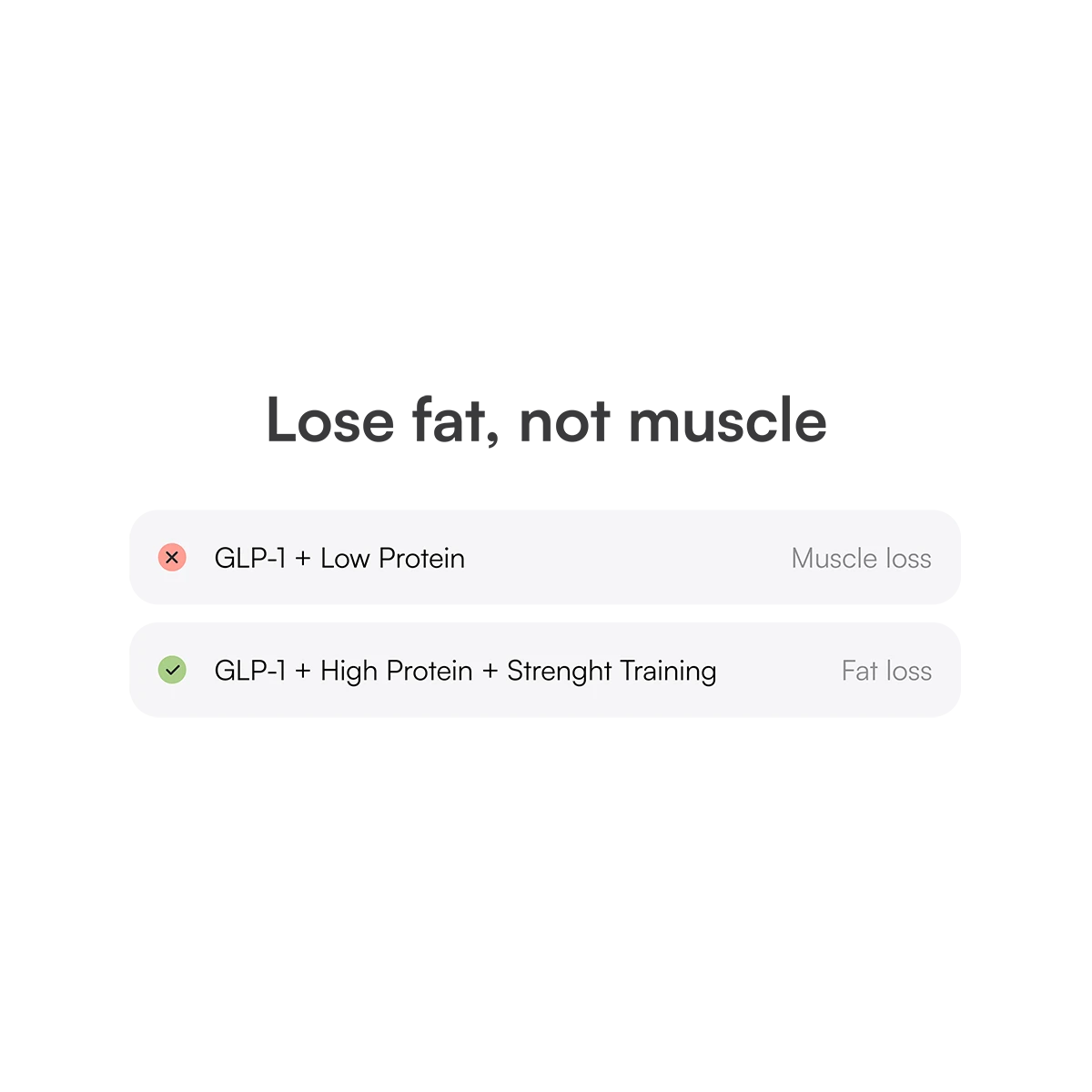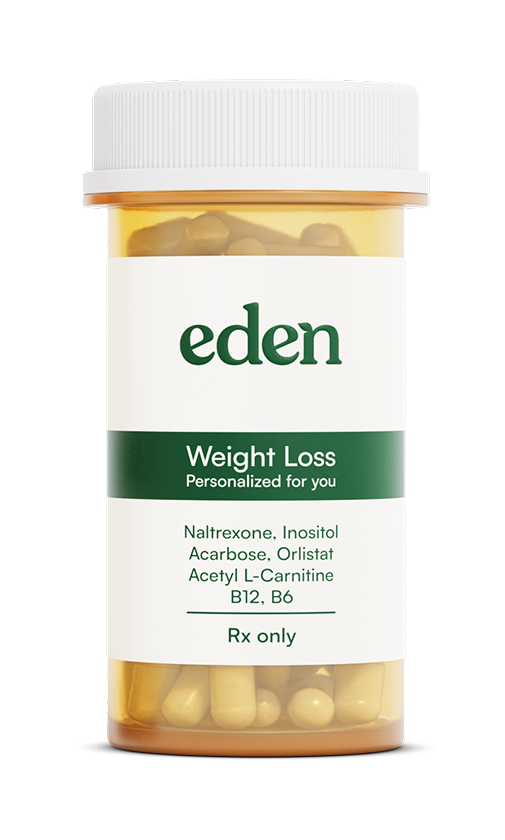Protein Intake Calculator for Weight Management Goals
Achieving your health and fitness goals – whether it's losing weight, maintaining your current weight, or building muscle – depends greatly on your diet. Protein, in particular, plays a key role in each of these goals. But how do you determine the right amount of protein you should be eating every day? This is where a protein intake calculator comes into play. A protein calculator tailors protein recommendations to your individual body weight, activity level, and objectives, helping ensure you consume enough protein to support your goals without overdoing it.
This article is intended for informational and educational purposes only. Please consult your provider to determine best practices for your health profile.
Why Protein Intake Matters
Protein is often called the “building block” of the body for good reason. It provides the amino acids needed to repair and build tissues, including muscle. However, the importance of protein goes beyond just muscles – it also significantly impacts metabolism, appetite, and overall body composition. Here are some of the key benefits of adequate protein intake for anyone managing their weight:
- Promotes Fullness and Appetite Control: High-protein foods tend to make you feel fuller for longer. Protein slows digestion and influences hunger hormones – it suppresses the hormone ghrelin (which triggers hunger) and boosts satiety hormones like GLP-1 and leptin. By keeping you satisfied, a protein-rich diet can naturally help reduce overall calorie intake and curb mindless snacking.
- Preserves Lean Muscle Mass: When you're dieting to lose weight, your body might burn muscle along with fat. Eating ample protein helps prevent this, so that most of the weight you lose comes from fat instead of lean tissue. This is crucial for maintaining a healthy metabolism – research shows that higher-protein diets help preserve your resting metabolic rate during weight loss.
- Supports Muscle Growth and Recovery: If your goal is to gain weight in the form of muscle (or to get stronger and more toned), protein is essential. Strength training creates microscopic tears in muscle fibers, and dietary protein provides the amino acids to repair and rebuild those fibers, making them bigger and stronger. Without enough protein, you simply can't effectively build new muscle tissue. (Importantly, protein works in tandem with exercise – you still need the stimulus of training for muscle growth. Extra protein alone won’t build muscle if you’re not working out.)
These benefits show why protein intake is a cornerstone of any effective nutrition plan. Whether you are cutting calories to lose fat or eating in a surplus to gain muscle, getting the right amount of protein helps ensure you lose the right kind of weight (body fat, not muscle) or gain quality weight (muscle, not just fat). In short, protein is critical for optimizing body composition, health, and performance.
Protein Requirements for Different Goals
How much protein you need per day depends on your goal – losing weight, maintaining, or building muscle – as well as factors like your body weight and activity level. Nutrition experts have developed general guidelines (usually given in grams of protein per kilogram of body weight) for different objectives:
- Weight Loss: If you are trying to lose weight, a higher protein intake than the basic RDA is beneficial. A common recommendation is around 1.0–1.2 grams of protein per kilogram of your current body weight. For example, someone weighing 150 lb (68 kg) would aim for roughly 70–80 grams of protein per day. This protein helps preserve muscle and keep you full when you're in a calorie deficit. Highly active or very lean individuals may benefit from even higher protein (sometimes up to ~1.6–2.2 g/kg in rigorous dieting conditions), but for most people about 1.2 g/kg is a solid target to start with.
- Weight Maintenance (General Health): For maintaining weight and general health, protein needs are moderate. The standard minimum is 0.8 g/kg of body weight (about 0.36 g/lb) for an average sedentary adult. In practice, many nutritionists encourage a slightly higher intake – around 1.0 g/kg – to better support muscle maintenance and overall wellness, especially if you are active or aging.
- Muscle Gain (Hypertrophy/Bulking): If your goal is to gain weight in the form of muscle mass, you will need a higher protein intake combined with strength training. A widely cited range for maximizing muscle growth is roughly 1.6–2.2 g/kg of body weight per day (about 0.7–1.0 g per lb). Intakes around 1.6 g/kg have been shown to significantly boost muscle gains in training individuals, whereas consuming more than ~2.2 g/kg has not shown additional benefit for muscle building. In practical terms, this means a 75 kg person would target roughly 120–165 grams of protein per day to maximize muscle gain. Staying within this high-protein range, alongside eating enough total calories and following a progressive resistance training program, will provide the raw materials and stimulus needed for muscle growth.

These ranges underscore that protein needs are higher for active individuals or those changing their weight, and more modest for maintenance. There isn’t a one-size-fits-all number – for instance, a bodybuilder will need more protein than someone of the same weight who is sedentary. This is precisely why a protein intake calculator is useful: it helps fine-tune the recommendation based on your personal profile, rather than relying on a single generic figure.
Factors That Influence Your Protein Needs
Several factors determine where in the above ranges your own protein requirements will fall. A good protein calculator will take some of these into account:
- Body Weight and Composition: Your total body weight is the starting point for protein estimates, but lean body mass (muscle) is really the protein-demanding tissue. If you have a higher percentage of body fat or are classified as overweight, your optimal protein per kilogram of total body weight might be on the lower end of the range. This is because excess fat mass doesn’t increase protein needs the way muscle mass does. For instance, an overweight individual may find that 1.2–1.5 g/kg (using actual body weight) is sufficient for muscle maintenance. In contrast, a very lean, muscular person might require the higher end (or beyond) when trying to cut body fat. Some calculators adjust for body composition by asking for your body fat percentage or using your goal weight (or lean mass) to set protein, which can provide a more accurate target if you carry a lot of excess fat.
- Activity Level: How often and how intensely you exercise is a major factor in protein needs. Someone who is mostly sedentary will have lower protein requirements than someone who trains hard regularly. If you engage in regular endurance exercise, your protein needs rise modestly (often to ~1.1–1.5 g/kg) to help repair and adapt your muscles. If you do frequent weight lifting or high-intensity training, protein needs are higher still (commonly in the 1.2–1.7+ g/kg range for serious strength athletes). Physical activity – especially resistance training – breaks down muscle fibers, so more protein is required to rebuild and strengthen those muscles. Good calculators will ask you to specify your activity level (e.g. low, moderate, high, or how many days a week you work out) in order to bump up protein recommendations appropriately for active individuals.
- Age: Age can influence how your body processes protein. Older adults tend to benefit from a higher protein intake to counteract age-related muscle loss (sarcopenia). After around age 40–50, our bodies become less efficient at using dietary protein for muscle-building, so baseline needs increase to about 1.0–1.2 g/kg in middle age and beyond. Thus, a 60-year-old might aim for the upper end of the maintenance range (or beyond) to help preserve muscle, even if their weight is the same as a younger person. A protein calculator may not explicitly ask your age, but it will assume an adult user – and the general advice is to err on the higher side of protein as you get older.
- Dieting vs. Bulking: Your current calorie intake (deficit, maintenance, or surplus) can affect protein requirements. During calorie restriction (cutting), more protein is needed to prevent muscle loss (as discussed in the weight loss section). If you are in a steep calorie deficit or prepping for fat loss, aiming for the higher end of the protein range can be beneficial (e.g. ~1.5–2.0+ g/kg for lean individuals in a big deficit). Conversely, during calorie surplus (bulking), while protein is still crucial, your body has ample energy available, so about 1.6 g/kg may be sufficient even if you’re eating more calories overall. Many protein calculators indirectly account for this by letting you choose a goal like “fat loss” or “muscle gain,” which then uses a higher or lower protein multiplier respectively.
- Health Conditions or Special Circumstances: Certain health conditions can influence protein needs or how your body handles protein. For example, people with kidney disease are typically advised to limit protein intake to reduce strain on the kidneys. On the other end, athletes with extremely high training loads or people recovering from injuries/surgeries might need extra protein for healing. Pregnancy and breastfeeding also increase protein requirements for tissue growth and milk production. A standard calculator might not cover all these scenarios, so if you have a medical condition or unique situation, it’s wise to consult a healthcare provider or registered dietitian for individualized guidance. In general, healthy individuals can safely follow the ranges given by calculators and adjust as needed.
What is a Protein Intake Calculator (and How Does It Work)?
Typically, these tools ask for your body stats (like your weight, and sometimes height, age, or sex) along with your goal (losing weight, gaining muscle, or maintaining) and your activity level. Using these inputs, the calculator applies an appropriate protein factor (grams per kilogram) based on nutritional research, and it outputs your personalized daily protein target in grams. Essentially, it’s doing the math for you – for example, if you indicate that you are moderately active and aiming for fat loss, the calculator might assume a protein need around 1.2 g/kg and multiply that by your weight. Many calculators also account for body composition by using your lean mass or goal weight (rather than total body weight) if you have a higher body fat percentage, to avoid overestimating your needs. The result is a quick, customized recommendation that you can use as a guideline for planning your diet.
Putting Protein Recommendations into Practice
Getting a personalized protein number is only useful if you apply it in your daily eating. Here are some tips on how to use the output from a protein intake calculator in real life:

- Spread Protein Across Meals: Rather than trying to eat all your protein in one meal, aim to distribute it fairly evenly throughout the day. Your body absorbs and uses protein more effectively in moderate doses. Eating around 20–30 grams of protein in each meal is often ideal for stimulating muscle protein synthesis repeatedly. Consuming much more than ~40 grams at once doesn’t provide added benefit and could be less efficiently utilized. For example, if your goal is 90 grams of protein per day and you eat three meals, you might plan for ~30 g at breakfast, ~30 g at lunch, and ~30 g at dinner.
- Choose High-Quality Protein Sources: Not all proteins are created equal. “High-quality” protein sources contain all the essential amino acids your body needs and are typically more easily digested. These include lean meats (chicken, turkey, lean beef), fish and seafood, eggs, and low-fat dairy (e.g. Greek yogurt, cottage cheese). You can absolutely meet your protein goal with plant-based foods as well – beans, lentils, chickpeas, soy products (tofu, edamame), quinoa, nuts, and seeds are all excellent protein sources. However, plant proteins are often “incomplete” on their own (missing some essential amino acids), so be sure to eat a variety of them over the day or combine complementary plant proteins (for example, beans with rice). If you find it challenging to hit a high protein target through food alone, protein shakes or bars can be convenient supplements; just be mindful of their calorie content and try not to rely on them for every meal.
- Increase Gradually and Stay Balanced: If your calculator result suggests a much higher protein intake than you’re used to, increase your protein gradually rather than all at once. For example, start by adding an extra egg at breakfast or a serving of Greek yogurt as a snack, and build up over a few weeks. This helps your digestion adapt and makes the habit more sustainable. Also, remember to drink plenty of water when you increase protein (higher-protein diets can have a mild diuretic effect), and continue eating a variety of foods. Hitting your protein goal shouldn’t come at the expense of other nutrients – maintain a balanced diet with vegetables, fruits, whole grains, and healthy fats alongside your protein.

By following these practices, you’ll make the most of your personalized protein recommendation. Many people find that once they increase their protein intake to the recommended level, they notice positive changes such as feeling fuller between meals, improved muscle tone and recovery (if exercising), and even better control of cravings.
Special Considerations for GLP-1 Users
If you are using GLP-1 receptor agonist medications for weight loss (such as semaglutide, e.g. Ozempic® or Wegovy®), paying extra attention to protein intake becomes especially important. These medications are very effective at suppressing appetite and helping reduce body weight, but that weight loss can include loss of muscle mass if you’re not careful.
GLP-1 and Appetite Suppression: GLP-1 agonist drugs dramatically reduce hunger. They make you feel full much sooner and significantly curb your food intake. While this helps you eat fewer calories (aiding weight loss), it also means you must be intentional about getting enough protein, since your overall food consumption is lower. Without conscious effort, you might inadvertently eat too little protein on these medications, increasing the risk of losing muscle along with fat.
Importance of Protein for GLP-1 Users: Rapid weight loss on GLP-1 therapy, if done without adequate protein or exercise, can result in more muscle loss than desired. The good news is that by prioritizing protein and strength training, you can minimize this issue. A recent study on people taking GLP-1 drugs found that those who did resistance exercise and ate sufficient protein lost almost exclusively fat, maintaining nearly all of their lean muscle mass. The researchers emphasized that “strength training and enough protein were key” to preserving muscle during GLP-1-assisted weight loss.
Protein Goals and Tips: Experts advise GLP-1 users to aim for a protein intake at the higher end of the weight-loss range. Roughly 1.2–1.5 g/kg of your target body weight per day is often recommended. In practice, focus on eating protein-rich foods first at each meal (for example, start with your chicken, fish, tofu, or Greek yogurt) to ensure you meet your protein goal even if you feel full quickly. This, combined with regular strength or resistance exercise, is a proven strategy to preserve muscle while losing fat on GLP-1 therapy. Many healthcare providers stress this combination of medication + high-protein diet + exercise for the best outcomes. In short, use a protein calculator to determine your daily protein target just as you would if you were dieting without the medication – then make a conscious effort to hit that number. By doing so, you support your metabolism and ensure that the pounds you shed are coming from stored fat rather than your hard-earned muscle.

Conclusion
A protein intake calculator offers a simple yet powerful way to align your nutrition with your goals. Its purpose is to give you a clear daily protein target tailored to your body and objectives, taking out the guesswork. As we’ve seen, the right amount of protein is critical – it keeps you full, preserves muscle, and aids in either weight loss or muscle gain. By using the calculator’s output as a guide, you can plan high-protein meals that support your journey, whether that’s shedding fat, maintaining your current weight, or building new muscle.
The usefulness of personalizing your protein intake cannot be overstated. Too little protein can sabotage your progress (leading to excess hunger, muscle loss, or slow recovery), while too much may be unnecessary. A balanced, evidence-based target helps you find the sweet spot. This is backed by the scientific background we discussed: higher-protein diets improve satiety and body composition, especially when combined with exercise. And if you’re on a medication like GLP-1 for weight loss, knowing your protein goal is even more crucial to ensure the weight you lose is coming from the right places.
In essence, understanding and meeting your personalized protein needs will set you up for success. It’s a strategy to fuel your body wisely so you can reach your weight and fitness goals more effectively and sustainably.
This protein intake calculator is intended for informational and educational purposes only. The results are an estimate and are not intended to be a substitute for professional medical advice, diagnosis, or treatment.
Eden does not provide medical advice. The information generated by this tool should not be used to make decisions about your health. Always seek the advice of your physician or another qualified healthcare provider with any questions you may have regarding a medical condition or before starting any new diet or exercise program.



















